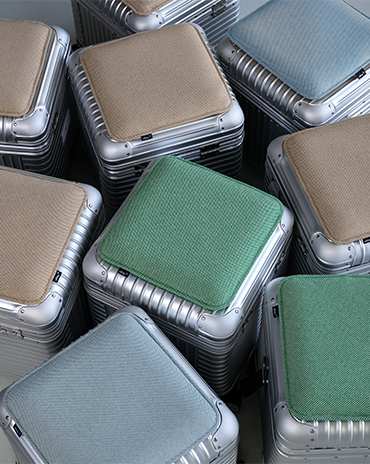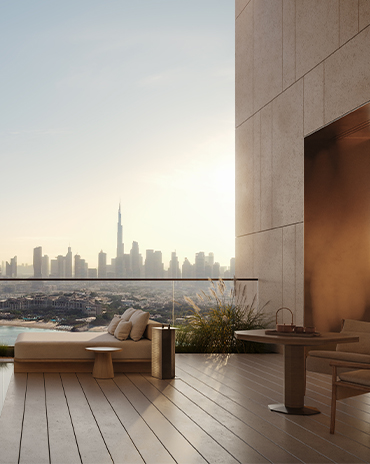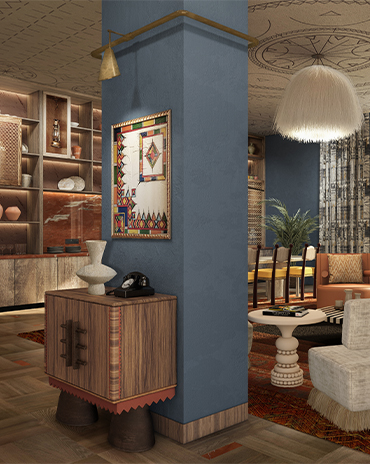Copyright © 2025 Motivate Media Group. All rights reserved.
The North Star Pavilion explores additive manufacturing and recycling technologies in architecture
Nyxo studio unveiled The North Star pavilion at Dubai Design Week 2023
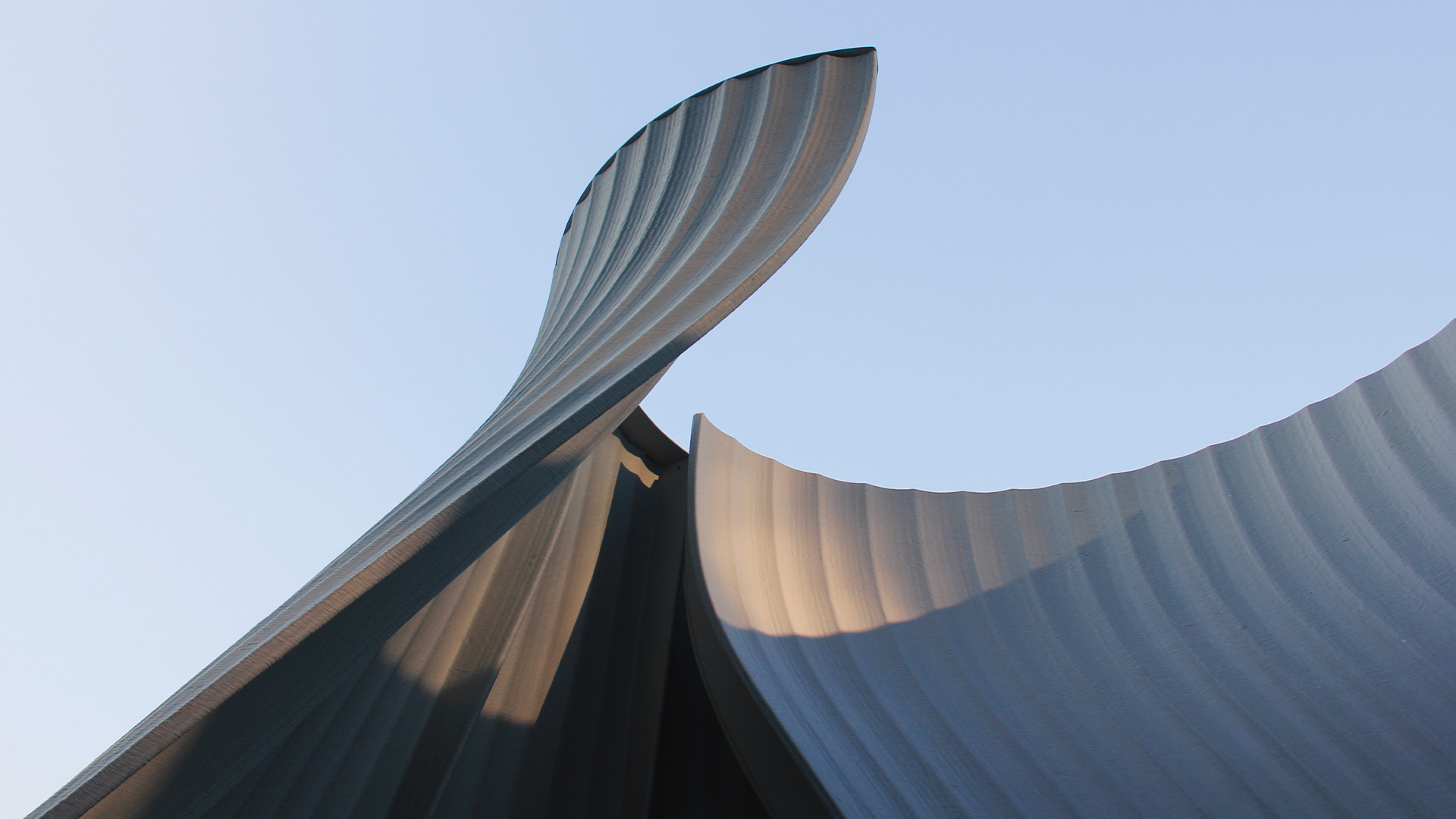
Nyxo studio recently presented The North Star pavilion, a 3D-printed structure designed as an exhibition space for startup incubator In5 to showcase the work of its companies, and to be used as a meeting space. The pavilion was showcased for the first time at Dubai Design Week 2023 and will serve future events for 2024.
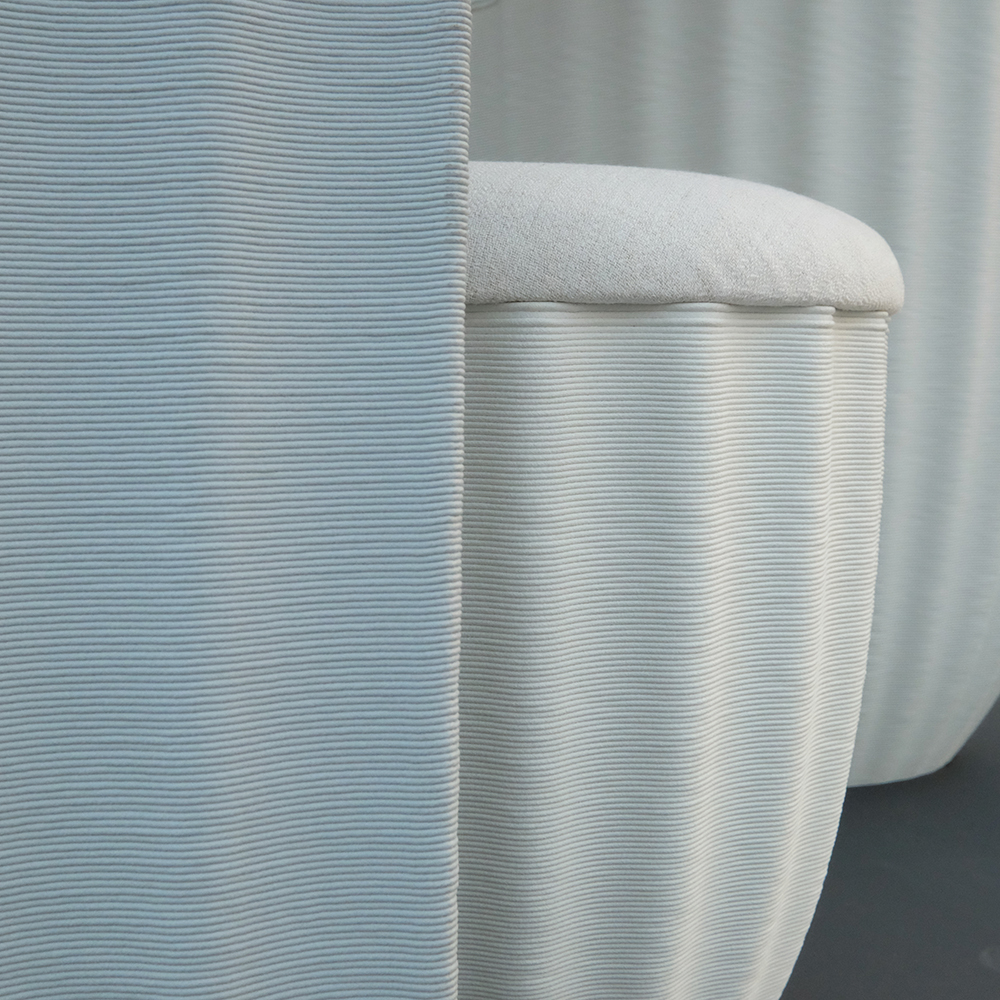
The architecture
The four souls of In5 – media, technology, design and science – are represented by an infinite loop, generating four spaces that flow into each other. The loop organises the movements of a series of surfaces that meet and fold together, articulating the opening or enclosure of the spaces. The S-shaped surfaces create fluid flows between the outdoor and the indoor spaces, defining pointed arches as an homage to the ogee arches of Islamic architecture.
The surfaces are characterised by a fluted pattern that emphasises their geometry, interpolating sections of different sizes and shapes. The interior side of the walls is differentiated from the exterior by the presence of a series of structural ribs, forming an extension of the pattern in needed moments. These ribs make possible the connections between the different parts.
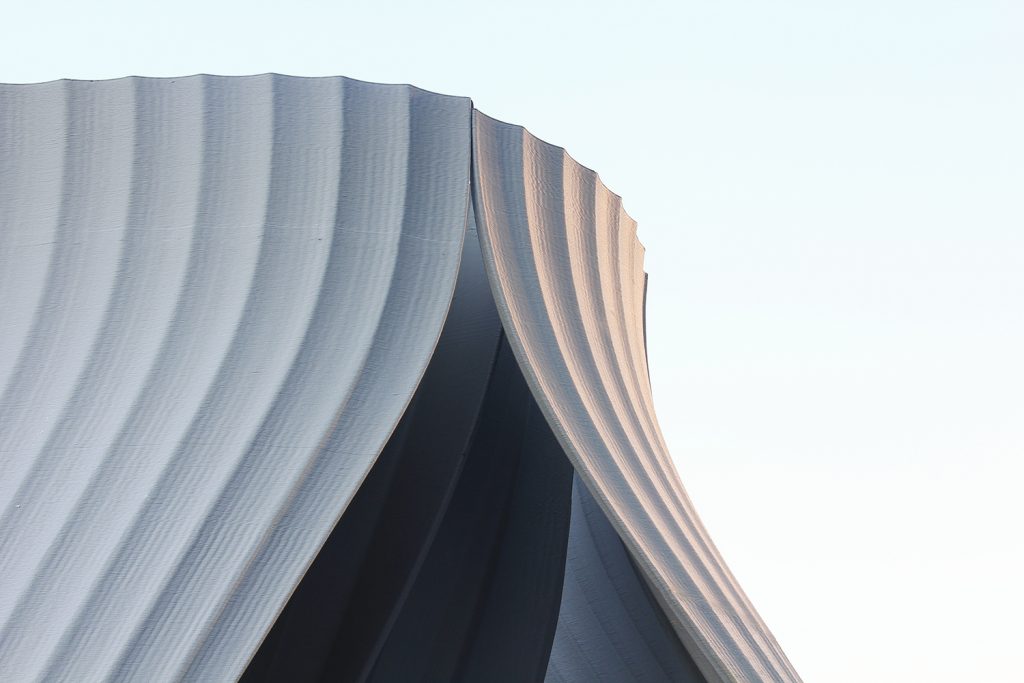
Additive manufacturing and material cycle
The pavilion is an exploration of the potential application of additive manufacturing (AM) and recycling technologies in architecture, showcasing the possibilities of large-scale thermoplastic printing. The pavilion is designed around the principle of repurposing and recycling. The structure is manufactured using a blend of recycled PETG with glass fibre and a UV stabiliser, ideal for long-lasting outdoor use. AM technology allows for the minimisation of waste during production, making it possible to print only the necessary material to make the panels. After its initial use, the pavilion could be recycled and, by reshaping it, it can be repurposed for different functions.
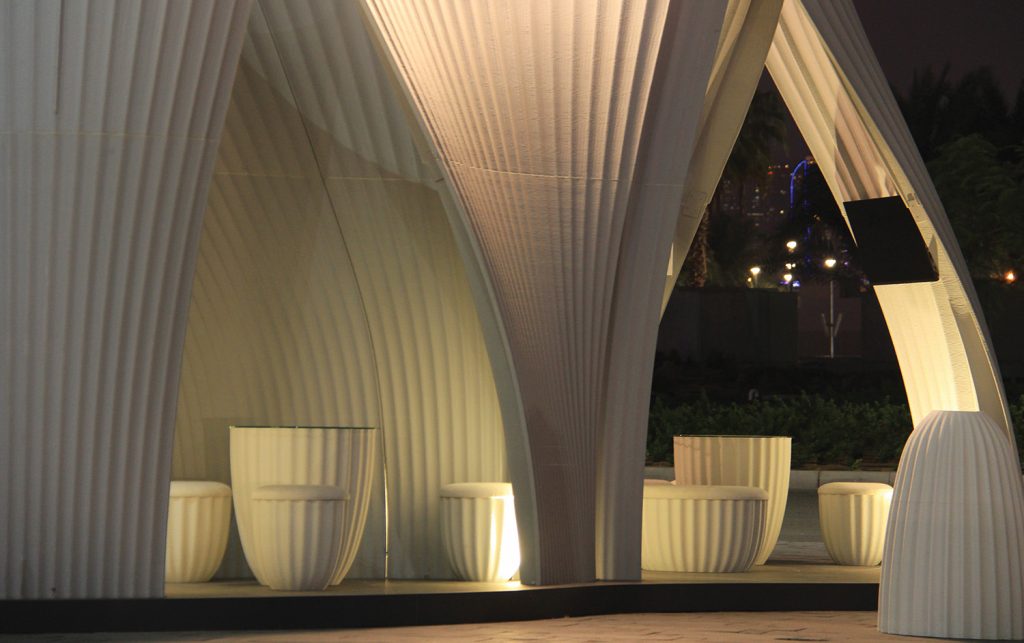
• The pavilion is made from a series of 3D-printed panels using a post-industrial recycled PETG, with 30% glass fibre and UV-stabilised (high stiffness/suitable for outdoors).
• The panels are stiffened by flutes and a series of 15cm ribs on one side of the panel.
• Each panel is 4.2 metres tall, and made from two parts, connected in the middle using naval glue and steel plates clamping the ribs from the sides.
• Each rib is connected to the platform using T-shaped steel connectors. The connectors are fixed to the wooden platform with screws.
• The panels are connected at the top. The connection is made via the ribs that meet at a series of points. The ribs are then fixed with U-shaped steel plates and screws.
• The wooden platform is a sandwich of laminated plywood and solid wood frames. The solid wood is also placed where the ribs meet the platform.

Engineering consulting:
ARUP Dubai
Simone Materazzo
Giulia Cavallari
3D printing manufacturing:
Al Seer Marine
The Latest
Designing Movement
RIMOWA’s signature grooved aluminium meets Vitra’s refined design sensibilities
A Sense of Sanctuary
We interview Tanuj Goenka, Director of Kerry Hill Architects (KHA) on the development of the latest Aman Residences in Dubai
Elevated Design
In the heart of Saudi Arabia’s Aseer region, DLR Group has redefined hospitality through bold architecture, regional resonance and a contemporary lens on culture at Hilton The Point
Turkish furniture house BYKEPI opens its first flagship in Dubai
Located in the Art of Living, the new BYKEPI store adds to the brand's international expansion.
Yla launches Audace – where metal transforms into sculptural elegance
The UAE-based luxury furniture atelier reimagines the role of metal in interior design through its inaugural collection.
Step inside Al Huzaifa Design Studio’s latest project
The studio has announced the completion of a bespoke holiday villa project in Fujairah.
Soulful Sanctuary
We take you inside a British design duo’s Tulum vacation home
A Sculptural Ode to the Sea
Designed by Killa Design, this bold architectural statement captures the spirit of superyachts and sustainability, and the evolution of Dubai’s coastline
Elevate Your Reading Space
Assouline’s new objects and home fragrances collection are an ideal complement to your reading rituals
All Aboard
What it will be like aboard the world’s largest residential yacht, the ULYSSIA?
Inside The Charleston
A tribute to Galle Fort’s complex heritage, The Charleston blends Art Deco elegance with Sri Lankan artistry and Bawa-infused modernism
Design Take: Buddha Bar
We unveil the story behind the iconic design of the much-loved Buddha Bar in Grosvenor House.





